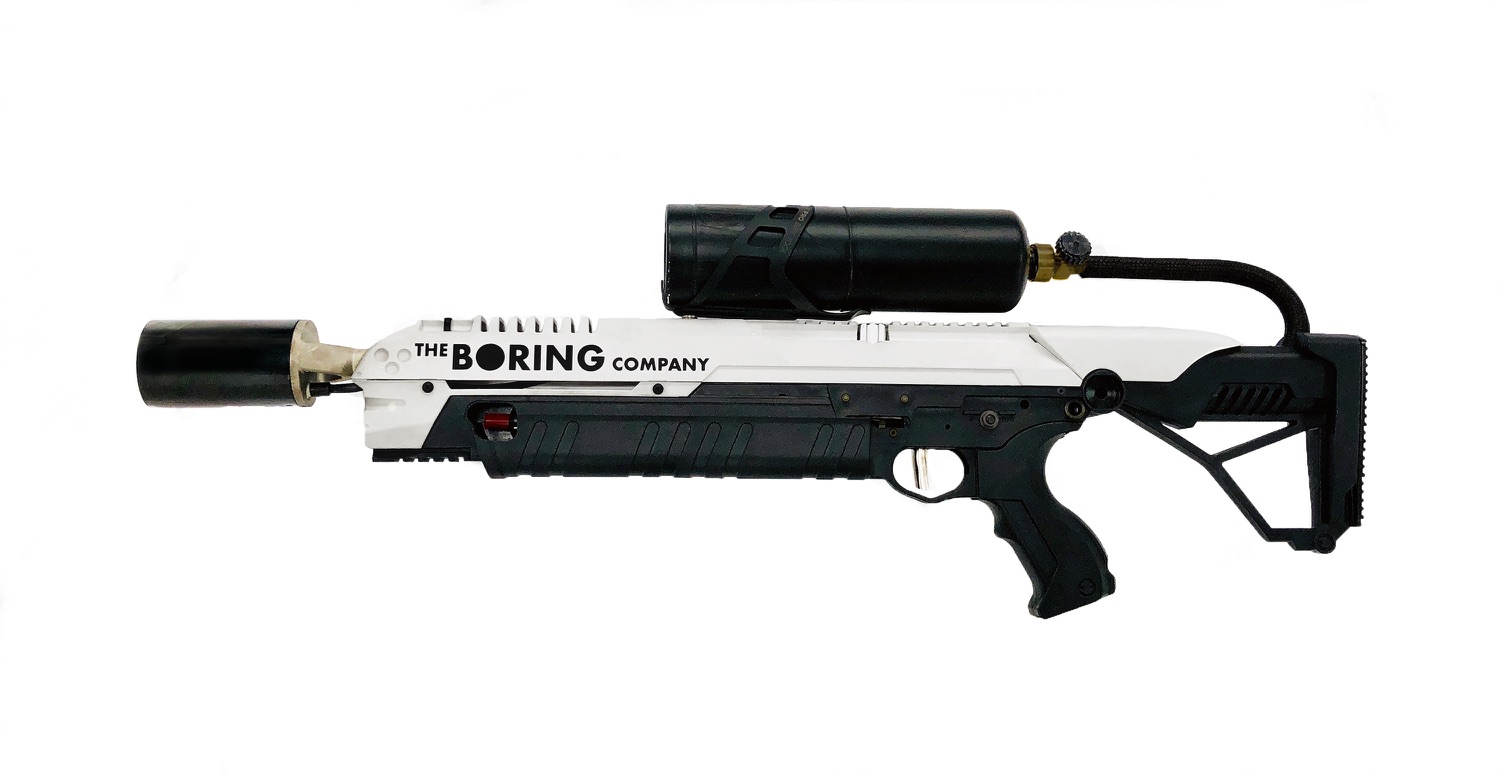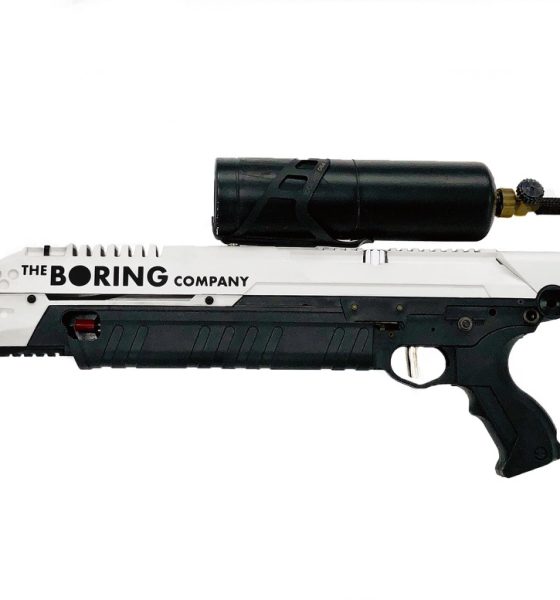

News
Elon Musk’s flamethrower gets reprieve in CA after lawmaker’s bill falls through
California lawmakers recently blocked proposed restrictions for the sale and use of The Boring Company’s Not-a-Flamethrowers in the state. The suggested restrictions were authored by LA Assemblyman Miguel Santiago (D-Los Angeles), who earlier this year issued a strongly-worded criticism of the device.
The Boring Co. Not-a-Flamethrower was launched by Elon Musk earlier this year. The devices, which Musk dubbed as a “super terrible idea,” were sold for $500 each during a limited run of 20,000 units. All 20,000 Not-a-Flamethrowers were sold out within four days, raising $10 million for the tunneling startup.
While the Boring Co. Not-a-Flamethrower proved incredibly popular, LA Assemblyman Miguel Santiago found nothing amusing about the device. At the end of January, Santiago issued a press release strongly criticizing the firestarter.
If this is real, I’m outraged and you should be too. If this is a joke, then it’s a terribly insensitive one given that we’re coming off of the worst wildfire season in history. Either way: NOT FUNNY. NOT GONNA HAPPEN. pic.twitter.com/82n00um9Bf
— Miguel Santiago (@MSantiagoAD54) January 29, 2018
Santiago would go on to author AB-1949, better known as the Flamethrower Bill. The bill’s first iteration proposed several restrictions on the sale and use of flamethrowers in California. As could be seen in a copy of the Assemblyman’s bill, owners of Tier II flamethrowers (devices that can shoot flames at least 2 feet but not exceeding 10 feet, like the Boring Co. Not-a-Flamethrower) must have a valid pyrotechnic operator license from the State Fire Marshal and the necessary permits before they are allowed to use the device. Without these documents, buyers of the Boring Co. flamethrower would be at risk of fines or even imprisonment. Here is an excerpt from the Assemblyman’s original bill.
“Any person who uses or possesses any Tier I or Tier II flamethrowing device… without a valid flamethrowing device permit issued pursuant to this part is guilty of a public offense and, upon conviction, shall be punished by imprisonment in the county jail for a term not to exceed one year, or in the state prison, or by a fine not to exceed ten thousand dollars ($10,000), or by both imprisonment and fine.”
Santiago’s bill was largely supported by the police and fire officials. As the bill advanced, however, it was eventually amended. The amendments in the bill were primarily focused on Santiago’s proposed restrictions on Tier II flamethrowers, which are less powerful and less likely to cause harm. The suggested imprisonment and fines for individuals using Tier II flamethrowers without permits were struck off the bill as well.
Santiago eventually narrowed the scope of his bill, suggesting that the devices like the Boring Co. Not-a-Flamethrower must carry a safety label. Even this, however, was stalled on Friday, when the bill was held at the Assembly Appropriations Committee. As noted in a San Francisco Chronicle article, the Flamethrower Bill ultimately became a victim of the state’s “suspense file” process, where legislative leaders usually kill bills that can pose an embarrassing vote for the party.
It is pertinent to note that the Boring Co. Not-a-Flamethrower is more of an oversized butane torch than a full-fledged flamethrower. The device shoots flames similar to the Weed Dragon, a torch that can be bought at hardware stores. Tier I flamethrowers, such as the XM42-M, are on an entirely different level, as these devices are capable of shooting flames up to 30 feet.
For now, however, reservation holders of the Boring Company Not-a-Flamethrower could look forward to the upcoming pickup party on June 9 at Los Angeles. The event, which would feature the handover of the first 1,000 Not-a-Flamethrowers, will also include fun activities such as photo booths, marshmallow toasting sessions, and zombie simulations. Deliveries of the Not-a-Flamethrowers would follow soon after.

Elon Musk
Delaware Supreme Court reinstates Elon Musk’s 2018 Tesla CEO pay package
The unanimous decision criticized the prior total rescission as “improper and inequitable,” arguing that it left Musk uncompensated for six years of transformative leadership at Tesla.

The Delaware Supreme Court has overturned a lower court ruling, reinstating Elon Musk’s 2018 compensation package originally valued at $56 billion but now worth approximately $139 billion due to Tesla’s soaring stock price.
The unanimous decision criticized the prior total rescission as “improper and inequitable,” arguing that it left Musk uncompensated for six years of transformative leadership at Tesla. Musk quickly celebrated the outcome on X, stating that he felt “vindicated.” He also shared his gratitude to TSLA shareholders.
Delaware Supreme Court makes a decision
In a 49-page ruling Friday, the Delaware Supreme Court reversed Chancellor Kathaleen McCormick’s 2024 decision that voided the 2018 package over alleged board conflicts and inadequate shareholder disclosures. The high court acknowledged varying views on liability but agreed rescission was excessive, stating it “leaves Musk uncompensated for his time and efforts over a period of six years.”
The 2018 plan granted Musk options on about 304 million shares upon hitting aggressive milestones, all of which were achieved ahead of time. Shareholders overwhelmingly approved it initially in 2018 and ratified it once again in 2024 after the Delaware lower court struck it down. The case against Musk’s 2018 pay package was filed by plaintiff Richard Tornetta, who held just nine shares when the compensation plan was approved.
A hard-fought victory
As noted in a Reuters report, Tesla’s win avoids a potential $26 billion earnings hit from replacing the award at current prices. Tesla, now Texas-incorporated, had hedged with interim plans, including a November 2025 shareholder-approved package potentially worth $878 billion tied to Robotaxi and Optimus goals and other extremely aggressive operational milestones.
The saga surrounding Elon Musk’s 2018 pay package ultimately damaged Delaware’s corporate appeal, prompting a number of high-profile firms, such as Dropbox, Roblox, Trade Desk, and Coinbase, to follow Tesla’s exodus out of the state. What added more fuel to the issue was the fact that Tornetta’s legal team, following the lower court’s 2024 decision, demanded a fee request of more than $5.1 billion worth of TSLA stock, which was equal to an hourly rate of over $200,000.
Delaware Supreme Court Elon Musk 2018 Pay Package by Simon Alvarez
News
Tesla Cybercab tests are going on overdrive with production-ready units
Tesla is ramping its real-world tests of the Cybercab, with multiple sightings of the vehicle being reported across social media this week.

Tesla is ramping its real-world tests of the Cybercab, with multiple sightings of the autonomous two-seater being reported across social media this week. Based on videos of the vehicle that have been shared online, it appears that Cybercab tests are underway across multiple states.
Recent Cybercab sightings
Reports of Cybercab tests have ramped this week, with a vehicle that looked like a production-ready prototype being spotted at Apple’s Visitor Center in California. The vehicle in this sighting was interesting as it was equipped with a steering wheel. The vehicle also featured some changes to the design of its brake lights.
The Cybercab was also filmed testing at the Fremont factory’s test track, which also seemed to involve a vehicle that looked production-ready. This also seemed to be the case for a Cybercab that was spotted in Austin, Texas, which happened to be undergoing real-world tests. Overall, these sightings suggest that Cybercab testing is fully underway, and the vehicle is really moving towards production.
Production design all but finalized?
Recently, a near-production-ready Cybercab was showcased at Tesla’s Santana Row showroom in San Jose. The vehicle was equipped with frameless windows, dual windshield wipers, powered butterfly door struts, an extended front splitter, an updated lightbar, new wheel covers, and a license plate bracket. Interior updates include redesigned dash/door panels, refined seats with center cupholders, updated carpet, and what appeared to be improved legroom.
There seems to be a pretty good chance that the Cybercab’s design has been all but finalized, at least considering Elon Musk’s comments at the 2025 Annual Shareholder Meeting. During the event, Musk confirmed that the vehicle will enter production around April 2026, and its production targets will be quite ambitious.
News
Tesla gets a win in Sweden as union withdraws potentially “illegal” blockade
As per recent reports, the Vision union’s planned anti-Tesla action might have been illegal.

Swedish union Vision has withdrawn its sympathy blockade against Tesla’s planned service center and showroom in Kalmar. As per recent reports, the Vision union’s planned anti-Tesla action might have been illegal.
Vision’s decision to pull the blockade
Vision announced the blockade in early December, stating that it was targeting the administrative handling of Tesla’s facility permits in Kalmar municipality. The sympathy measure was expected to start Monday, but was formally withdrawn via documents sent to the Mediation Institute and Kalmar Municipality last week.
As noted in a Daggers Arbete report, plans for the strike were ultimately pulled after employer group SKR highlighted potential illegality under the Public Employment Act. Vision stressed its continued backing for the Swedish labor model, though Deputy negotiation manager Oskar Pettersson explained that the Vision union and IF Metall made the decision to cancel the planned strike together.
“We will not continue to challenge the regulations,” Petterson said. “The objection was of a technical nature. We made the assessment together with IF Metall that we were not in a position to challenge the legal assessment of whether we could take this particular action against Tesla. Therefore, we chose to revoke the notice itself.”
The SKR’s warning
Petterson also stated that SKR’s technical objection to the Vision union’s planned anti-Tesla strike framed the protest as an unauthorized act. “It was a legal assessment of the situation. Both for us and for IF Metall, it is important to be clear that we stand for the Swedish model. But we should not continue to challenge the regulations and risk getting judgments that lead nowhere in the application of the regulations,” he said.
Vision ultimately canceled its planned blockade against Tesla on December 9. With Vision’s withdrawal, few obstacles remain for Tesla’s long-planned Kalmar site. A foreign electrical firm completed work this fall, and Tesla’s Careers page currently lists a full-time service manager position based there, signaling an imminent opening.








